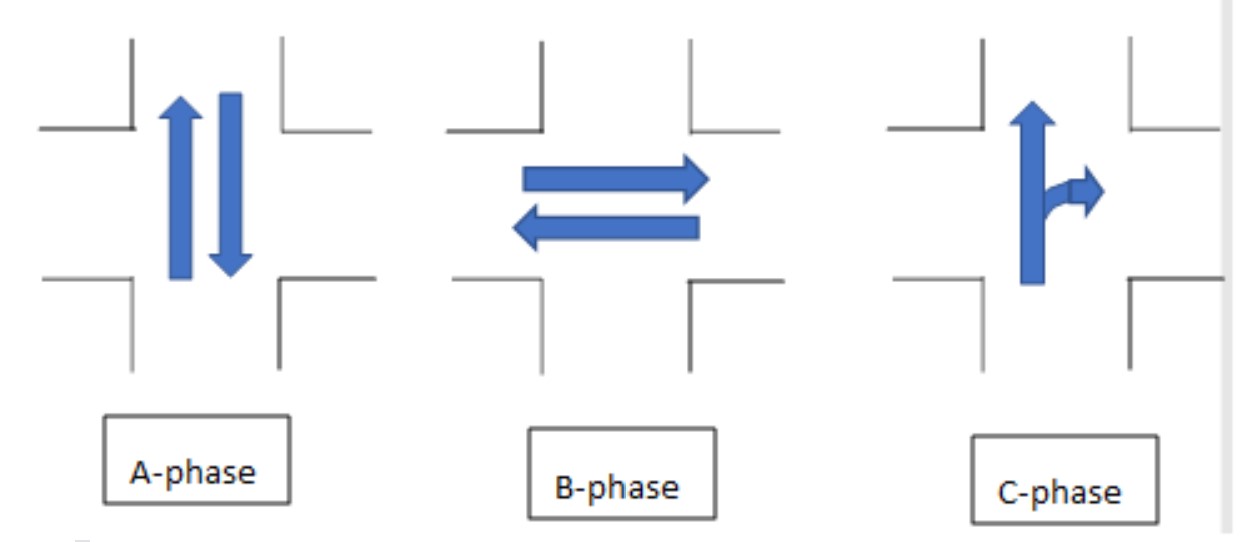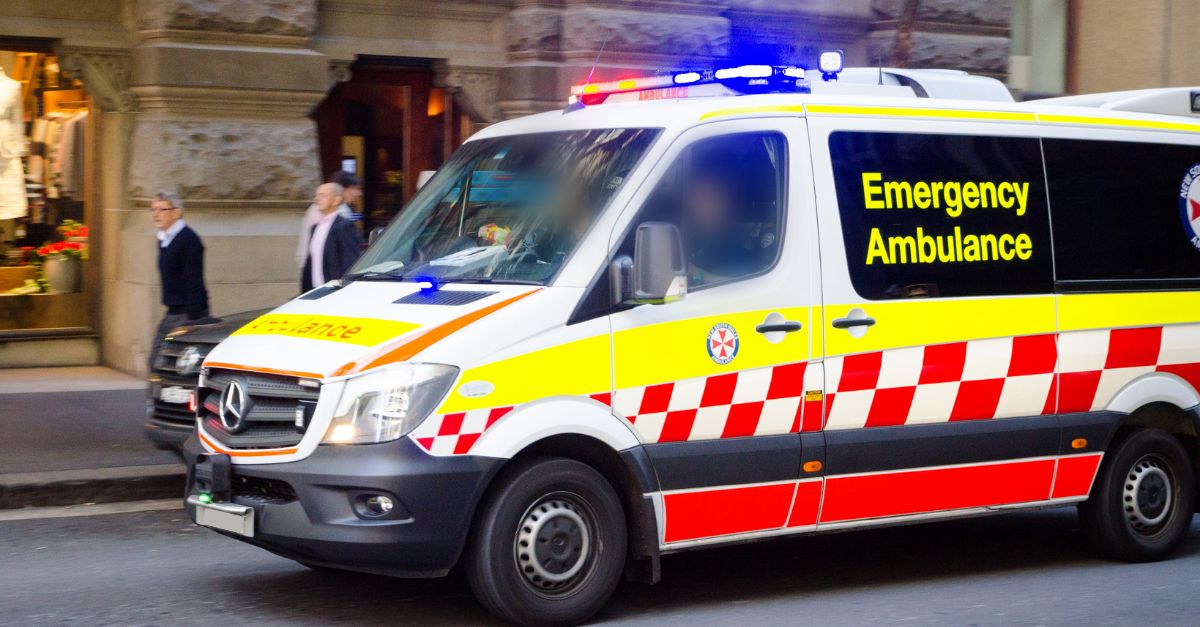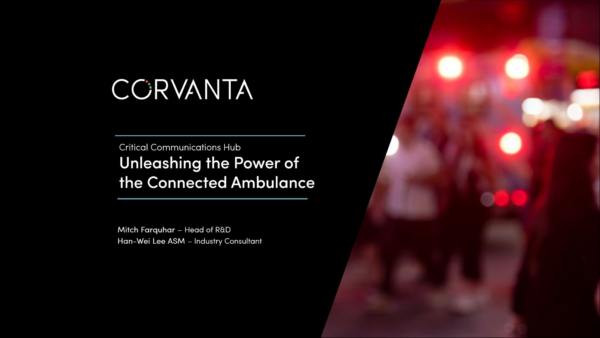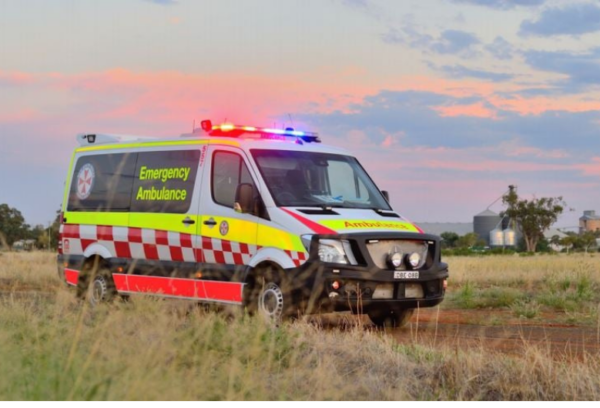We would all like to avoid sitting at a red light. For most of us, traffic signals are an inconvenient but necessary way to share the road. But in an environment where every second counts, traffic light priority for ambulance service providers could be the difference between life and death.


Mitch Farquhar
R&D Manager
Mitch has more than 20 years of experience building software solutions. He has led teams through all phases of the software development life cycle, including prototyping, patenting, commercialisation, implementation, and maintenance. Mitch plays a key role in defining Corvanta’s strategy for the provision of next generation pre-hospital care technology to our customers.
A recent study[1] highlights the potential increase in crash risk when ambulances operate with lights and sirens. When an ambulance responds to an emergency call without using lights and sirens, the crash rate is 4.6 per 100,000 responses. The crash rate increases to 5.5 when lights and sirens are used. The increase in risk is even greater when the ambulance is transporting a victim. The crash risk without lights and sirens is 7.0 per 100,000 trips, and increases to 16.5 when lights and sirens are used throughout the journey. Nearly 4 times the base level. Unfortunately, the number of deaths caused by these accidents in the USA and elsewhere, is trending upwards[2].

Traffic light priority was developed to give emergency services, including police, ambulances, and fire services, priority through an intersection safely – helping increase response times and survival rates in life-threatening cases.
So, what is traffic light priority? Simply put, it is modification of the traffic signal phases and timing to give a vehicle a green light through the intersection in the direction they want to go. Ideally an emergency service vehicle on a call will get green lights for their entire trip clearing the traffic and avoiding the need to cross the intersection on red.
Delivering priority
Satisfying phases
Intersections typically have a set of movements programmed that become a phase and they cycle from one phase to another in a regular manner. If a phase is not demanded (typically by a vehicle passing over the detection loops at the approach to the intersection) then it can be skipped. So, if a vehicle is going to request priority, the intersection needs to know how the vehicle is going to pass through the intersection and then the intersection maps this to one or more phases that might be OK for them to use.
For instance, let’s imagine a four way intersection that has three phases. If you are wanting to go from the bottom of the page to the right side of the page then you need the C phase but if you want to go from the bottom to the top then either A phase or C phase is satisfying. In this case, B phase is not a satisfying phase for you.

Changing phases is not like in the movies where the intersection suddenly goes from green to red and the other direction immediately goes from red to green. The controllers have built in safety features that means it takes time to shutdown a phase and start another. Where possible we need to make sure that the satisfying phase is started in enough time so that these inherent delays do not impact on our vehicle. Ideally, the phase will be set well ahead of the vehicle reaching the intersection to clear any traffic already at the intersection.
Priority approaches
There are normally four methods of delivering priority to road users including ambulance and public transport. These all include making sure that the approaching vehicle has a satisfying phase:
- Phase extension. Here the intersection is already in a satisfying phase and we just want to keep it in that phase until the vehicle has passed through. This has a very small impact on traffic and by defining a maximum extension of say, ten seconds for non-emergency vehicles and say thirty seconds for emergency vehicles we get the biggest benefit at the least cost to other road users.
- Early termination of a non-satisfying phase. Essentially, the light is already red. This shortens the current phase early allowing for the next phase to be started. Depending on how it is configured the next phase may be skipped to bring up a satisfying phase.
- Demand a Phase. This forces the intersection to go to the desired phase no matter what it was doing or planned to do. This works for emergency priority but has a highly disruptive effect on the overall traffic and is not suitable for bus priority.
- Early start. Detects that a vehicle like a tram is at the intersection and then uses local priority to trigger a special tram/bus phase to get the vehicle away from the lights early.
Pedestrian crossings have a much longer shutdown time (clearance time) to allow people to clear the intersection. This means they need more lead time for implementation of priority calls. At many intersections pedestrian demands are assumed and are automatically included in the phases for the intersection. However, at less busy crossings these are only activated when people activate the button. Many of these crossings do not involve vehicles crossing the path of the emergency services vehicle, so are less of an issue.
There are several ways that traffic signal priority can be requested depending on the existing signal infrastructure and communication channels in a city. These are outlined below.
Central traffic control system
A centralised system such as SCATS, SCOOT or STREAMS monitor all the intersections in real time and provides a holistic view of the traffic flows across a city. By controlling the cycle times and offsets of the intersections these centralised systems can provide a coordinated traffic flow (some times called a green wave) reducing the number and time of red lights in the primary traffic directions. When a vehicle is approaching an intersection that vehicle sends its location to its own location monitoring system and this sends a high-level request for a specific movement or phase to the central control system. This is then passed to the intersection for implementation. After the request has been satisfied, the intersection will attempt to self-correct back to its normal phases. The central system may adjust other timing to support the return to normal traffic flows.
Localised priority
When an intersection is running without a central traffic control system it is possible to send a priority request directly from the vehicle using a dedicated transmitter. Normally this uses radio frequencies but historically these have included infrared using systems like the GTT’s OPTICOM[3] system, microwave and even audio signals (think horns). A suitable receiver at the traffic signal control box detects this message and converts this into a phase demand which is sent to the controller. This process is fast but does not allow much discretion in the way that the vehicle passes through the intersection.
More recently Cooperative ITS (C-ITS) vehicle technology using DSRC has revived V2i as a viable mechanism for emergency vehicle priority[4]. 5G has very low latencies and is also fast enough for vehicle to infrastructure communications in many cases[5].
Priority broker
It is possible for individual control systems for buses, ambulances, and other vehicle types to make requests of the traffic control system for their vehicles alone. But in reality, they are seldom alone on the roads. When you are waiting on a bus to arrive it is important that it keeps to time and so bus priority is used to assist operators maintain their schedule. However, priority is often wanted by trucking companies to reduce their costs, and by Ambulance, Fire and Police services. To sort out who gets priority, there is typically a broker that accepts all these requests and ensures that those services with a higher priority (like ambulances with lights and sirens on) are not in conflict with a lower priority service (like an empty bus that is 1 minute late).
Generally, it is the responsibility of the initiating system to determine if a call is needed and for the broker to resolve which calls are acted on. This means that if a bus is running early with a low passenger load, it may not even make a priority call. Similarly, an ambulance that is just repositioning or doing a non-emergency patient transport, will not be operating with lights and sirens on, should not be making priority calls.
Asking for what you need
A 2013 trial of emergency vehicle priority on the Gold Coast showed travel time reductions for ambulances of up to 26%[6]. With the vehicle location coming from the ambulance AVL and the priority delivered by the STREAMS traffic control system. The EVP won an ITSA award in 2014 and its success meant that the system was subsequently rolled out to most of Queensland by 2019.
This system prepared the intersections for the ambulance’s approach assuming a path straight through the intersection and cleaned up after it had passed through the intersection. The intersection still needs to know where the vehicle is going, so that it can determine a satisfying phase and grant priority through the intersection.
For buses and trams this is straightforward. They are running on a predefined route so the path through the intersection is known well in advance and a list of satisfying phases at each intersection along the service path can be predetermined.
For Emergency Services, there is no fixed path through the intersection. Historically a path straight through the intersection is assumed and if the ambulance wants to turn at the intersection they must do so across the flow of traffic. Not only is this much more dangerous for the ambulance and other road users but it means that any priority green wave setup on the basis of this assumption is now no longer valid, and traffic has been disrupted needlessly. Looking at Figure 1 we can see that a vehicle travelling up the page and turning right is far better serviced by having the C phase called than the A phase because the C phase will shut down all opposing traffic and allow the emergency vehicle to cross the intersection with less likelihood of hitting another vehicle.

We are now at a time when modern algorithms (including AI) can accurately predict the arrival of the vehicle at the intersection several minutes ahead of time. Route guidance via a mobile data terminal (MDT) is routine and MDTs provide vehicle status and location reporting in real time. Because the MDT is aware of mode specific road conditions such as bus lanes or ambulance only turn points on freeways it can determine the fastest route to the destination. The key is to then take this route (which is continuously updated based on location and traffic conditions) and map it to the movements through the various intersections along the route and thus to allowable phases.
The principle is simple enough. Call up the satisfying phases ahead of time to clear the traffic and shutdown any cross flows. Then do this for several intersections along the route ahead of the vehicle. This will effectively clear out the traffic and give the ambulance safe passage through the intersection. Historically this was done manually and at some inner-city locations (such as the Roma St Fire station in Brisbane), buttons in the garage would trigger a series of priority interventions along a specific corridor (one button for each departure corridor) to get the emergency vehicle out past the first few intersections. However, these are very inflexible and once started the sequence completes even if the vehicle was not present.
Many AVL systems track ambulances and implement local priority using techniques identified above. Some make use of the centralised control and implement priority along a corridor using the “go straight through” assumption. We are now MTDs able to advise the traffic control systems where the vehicle wants to go and solutions like the Cornerstone product from Transport for NSW, can automatically map the intersection to the possible signalised movements. The SCATS Priority Engine (SPE) then uses this with a GPS feed and predictions of vehicle arrivals to deliver priority.
Conclusion
Traffic signal priority for buses is a well proven technology. Utilising either local priority mechanisms or sending requests to a central controller for implementation helps keep buses running to time. Ambulances have also benefited from basic priority systems. However, unlike public transport vehicles, ambulances have a higher level of criticality, do not follow a fixed route and often have higher speeds on the roads.
Given the increased chance of an accident when ambulances are operating with lights and sirens on, and the criticality of time on the journey, the benefits of traffic signal priority are clear. Mobile Data terminals with AVL capability, turn by turn directions and high-speed digital data communications now make this possible. We now know where the ambulance is, where it wants to go and when it will get to the intersection. Sending this information to a priority engine and brokering it along with other requests results in more green time, clear out waiting traffic and deliver a faster safer journey for all.
References:
[1] Watanabe, B.L., Patterson, G.S., Kempema, J.M, Magallanes, O., & Brown, L.H. (2019). Is use of warning lights and sirens associated with increased risk of ambulance crashes? A contemporary analysis using national EMS information system (NEMSIS) data. Annals of Emergency Medicine, 74(1).
[2] https://injuryfacts.nsc.org/motor-vehicle/road-users/emergency-vehicles/
[3] “Opticom: Emergency Vehicle Preemption,” 2012, http://www.gtt.com/emergency-vehicle-preemption.
[4] https://journals.sagepub.com/doi/pdf/10.1155/2013/834976
[5] https://5g-mobix.com/assets/files/Latency-Assesment-for-CCAM-services-over-5G.pdf
[6] Case Study – Emergency Vehicle Priority EVP, Transmax, 2018

Mitch Farquhar
R&D Manager
Mitch has more than 20 years of experience building software solutions. He has led teams through all phases of the software development life cycle, including prototyping, patenting, commercialisation, implementation, and maintenance. Mitch plays a key role in defining Corvanta’s strategy for the provision of next generation pre-hospital care technology to our customers.
READ MORE
CRITICAL COMMS HUB SERIES

Critical Comms Hub Series: Enhancing First Responder Safety through AI Fatigue Detection
First responders often work under high-pressure and demanding conditions, which can lead to fatigue. Fatigue significantly impacts safety and the

Critical Comms Hub Series: When Your Communications Can’t Be Compromised
Reliable and uninterrupted communication is paramount for ambulance service providers. They require robust connectivity to ensure effective communication, seamless mapping

Critical Comms Hub Series: Unleashing the Power of the Connected Ambulance
Comms Hubs? MDTs? Apps? What’s the difference? Join Corvanta’s Head of Research & Development, Mitch Farquhar, and Industry Consultant Han-Wei

Critical Comms Hub Series: Harnessing V2X Technology in Ambulance Services
Lights and sirens are no longer the only way to alert traffic to an approaching ambulance. Vehicle-to-everything (V2X) communication allows



